Most homestead homeowners agree that one of many pleasures of residing on and dealing the land is just being exterior. However generally you find yourself with severe pores and skin irritation since you touched or brushed up in opposition to a plant that it’s best to keep away from.
Some crops trigger minor irritation and a few trigger extreme blistering. Studying which crops are a possible supply of ache in your homestead is a vital ability to grasp.
When you turn into aware of these crops, you possibly can simply spot and eliminate them earlier than they develop massive sufficient to trigger you and your loved ones any points.
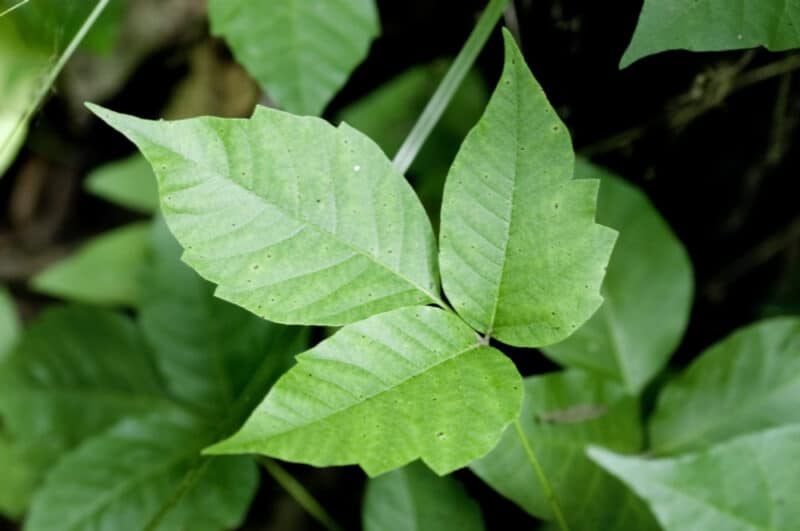

This could be the commonest irritating plant and essentially the most recognizable. Poison ivy grows throughout the US and odds are you’ve come throughout it very often when you spend time within the nice open air. There are three completely different species you may see within the US: Toxicodendron radicans, T. rydbergii, and T. orientale.
Poison ivy comprises a chemical referred to as urushiol, which is in your complete plant together with the leaves, roots, and flowers.
One of many annoying issues about poison ivy is that pores and skin irritation can seem days or perhaps a week after you might be uncovered. This leaves you confused and you might not hyperlink the problem again to if you have been exterior and encountered the plant.
If you happen to are available contact with the plant elements, and even somebody or one thing that has, you’re going to get an aggravating itch, redness and swelling, and generally blisters.
Topical or corticosteroid lotions might assist, or a physician might prescribe medicine in case your response is extreme.
Poison ivy grows in backyards within the suburbs, on homesteads, on the aspect of the street, and nearly wherever the land has been disturbed. It grows in a climbing behavior or trails alongside the bottom.
Poison ivy loses its leaves in fall, however the plant stays an irritant with out leaves, which develop again out within the spring.
They’ve compound leaves in clusters of three. Keep in mind the adage: leaves of three, let or not it’s. The center leaf stalk is the longest.
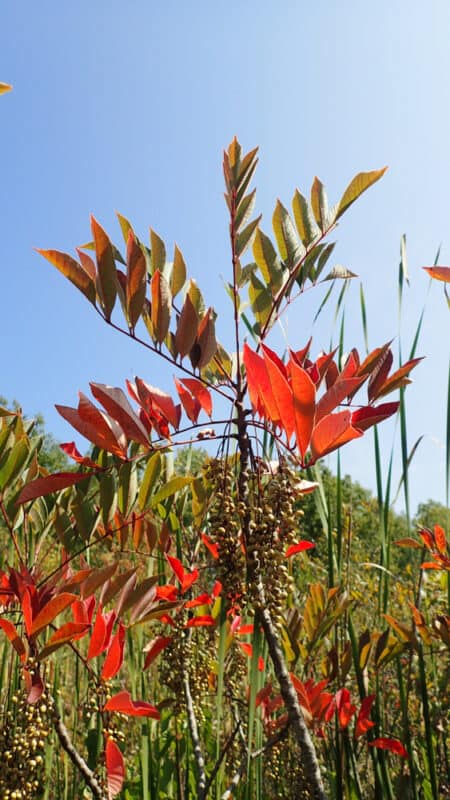

That is one other widespread plant throughout the US and in addition comprises urushiol. Normally present in environments round water like ponds, wetlands, and streams. You’ll find it wherever, however particularly in heavy clay soil.
It causes pores and skin irritation by way of contact, although as with all urushiol-containing crops, you could break the leaves, stems, or roots to be uncovered. Brushing up in opposition to the plant received’t do it.
In some individuals, poison sumac will be extra poisonous than poison ivy.
Poison sumac is typically referred to as thunderwood (Toxicodendron vernix) grows like a small tree or shrub.
It’s recognizable by the purple stem that comes off the trunk of the plant and has as much as 13 clean inexperienced leaves. The flowers are gentle yellow with a inexperienced tinge, and the berries are uninteresting grey.
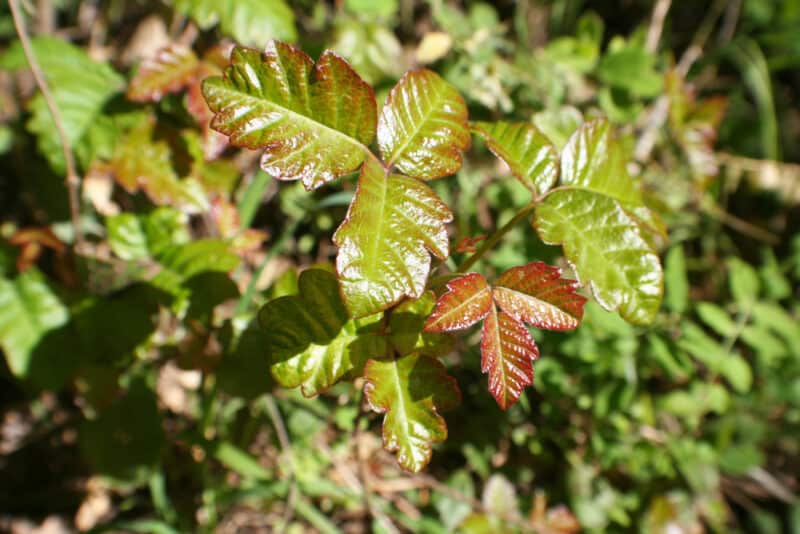

Rounding off our three crops containing urushiol, you could find poison oak (Toxicodendron diversilobum) in dry areas and forest places.
Additionally, remember that some individuals aren’t affected by urushiol they usually received’t notice they’ve been within the stuff till they contact somebody who’s affected. Then, that individual will escape in a rash as a result of the urushiol can journey on pores and skin, clothes, or instruments.
That’s why you really want to establish and remove the stuff. Don’t burn it, although! Burning urushiol-containing crops releases poisons into the air that may injury your lungs.
Poison oak has bushy, yellow flowers and berries coated in a skinny fuzz. It may possibly develop as a big woody vine or a woody shrub. It’s a deciduous plant, however remember. Even the twigs and stems with no leaves will trigger extreme pores and skin irritation.
The leaves are in a cluster of three and are darkish inexperienced. They appear a bit like English oak, although they aren’t associated.
It’s onerous to establish all theToxicodendron crops on this listing in the course of the winter as a result of the leaves aren’t current. That’s why it’s best to do your finest to look at them and keep in mind the place the patches are positioned in your property when the leaves are current.
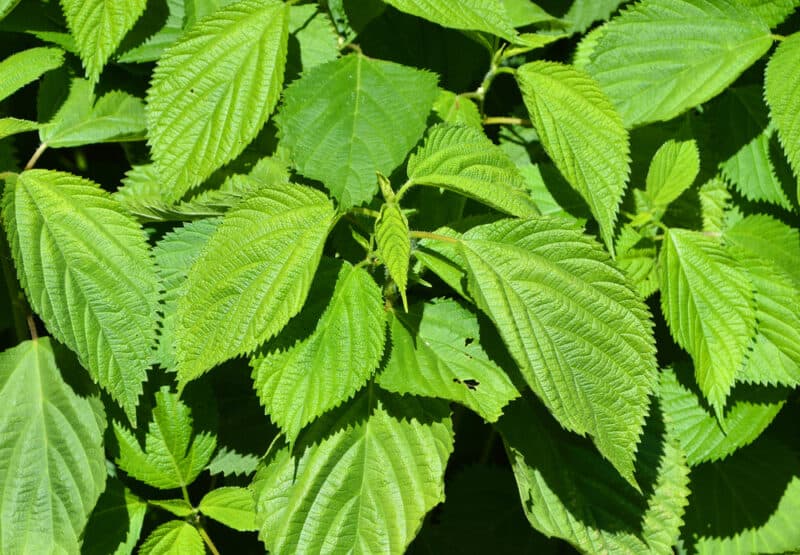

If you happen to wander by way of moist woodland areas, you might be more likely to come throughout wooden nettle (Laportea canadensis). It’s widespread in shaded and moist areas of homesteads. It doesn’t develop within the western a part of the US.
Many individuals eat wooden nettle by sautéing them. Simply you’ll want to put on gloves when gathering the crops.
Out of all of the stinging crops, I discover wooden nettle the simplest to cope with. If you happen to wash with cleaning soap and water, you possibly can diminish the results. Keep in mind although, these crops have an effect on individuals in numerous methods so one of the best factor is to keep away from all of them when you can.
Wooden nettle tends to develop in medium to massive patches, making it fairly simple to identify. At round 4 toes tall, stems are coated in stiff hairs that can sting you if you contact or simply rub in opposition to them.
The leaves are serrated and are darkish inexperienced or generally gentle inexperienced. The younger leaves have lots of hairs and in the summertime you will notice strands of white flowers.
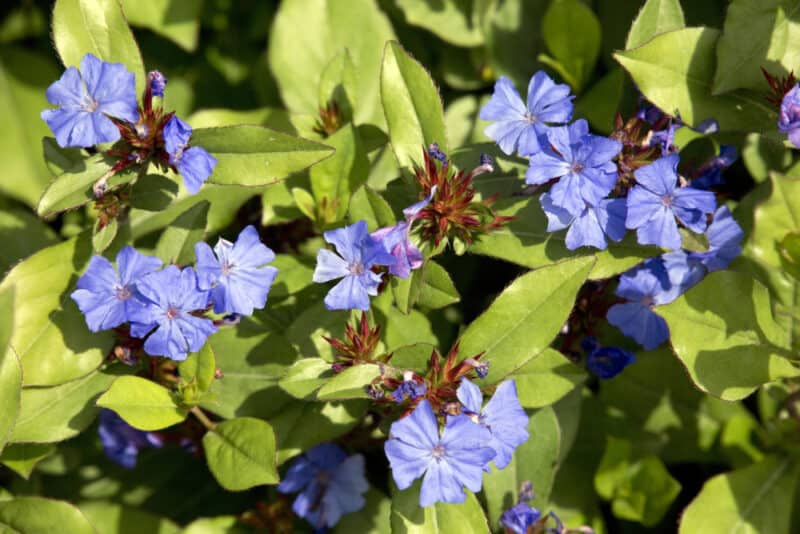

Ceratostigma plumbaginoides is a standard plant many individuals use of their gardens as a floor cowl. It appears fairly good, however don’t contact it.
Often known as plumbago, leadwort is widespread within the southern United States.
Use gloves when dealing with this plant as a result of pores and skin irritation is widespread together with redness and blistering.
The plant grows as much as 10 inches tall and is deciduous or semi-evergreen. The inexperienced leaves flip purple in fall, with gentian flowers blooming in spring and summer season.
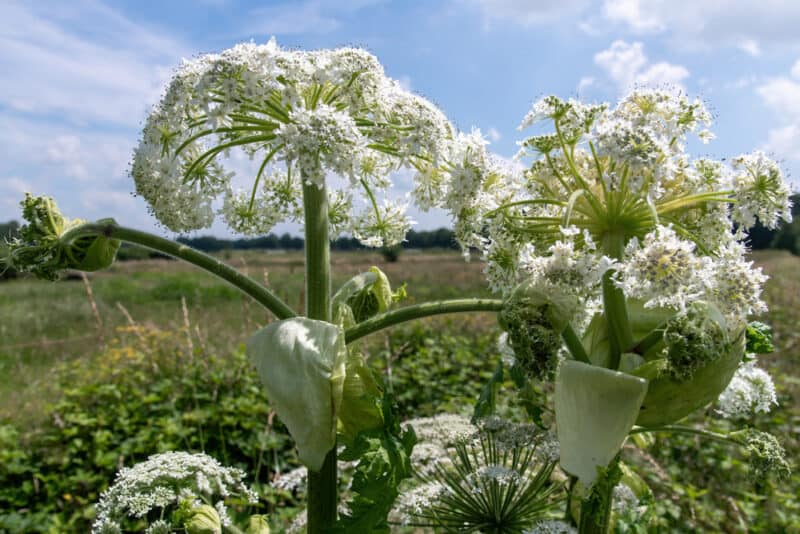

Have you ever ever checked out an overgrown space and thought you’d simply get a begin at eradicating the weeds? There’s the chance large hogweed (Heracleum mantegazzianum) is in among the many crops there. It’s widespread and thought of a noxious weed that’s invasive in North America.
There’s a sap inside this plant that causes irritation to your pores and skin and severe harm to the eyes that may trigger blindness. Critically: you could preserve the sap away out of your pores and skin and eyes.
Blistering and scarring is widespread, with the scar truly trying like burned pores and skin. You might also find yourself delicate to daylight.
Big hogweed is what is named a phototoxic plant. It wants ultraviolet gentle to burn your pores and skin. To be extra exact, it stops your pores and skin from having the ability to shield itself from the solar. If you happen to mistakenly contact this plant, keep out of daylight till you possibly can wash with cleaning soap and water. Even higher, keep out of the solar for 48 hours after washing.
Big hogweed grows tall. It’s recognized to achieve 14 toes in peak. The stems are onerous and hole, with white hairs. The leaves could be a large 5 toes throughout. It has massive clusters of white flowers.
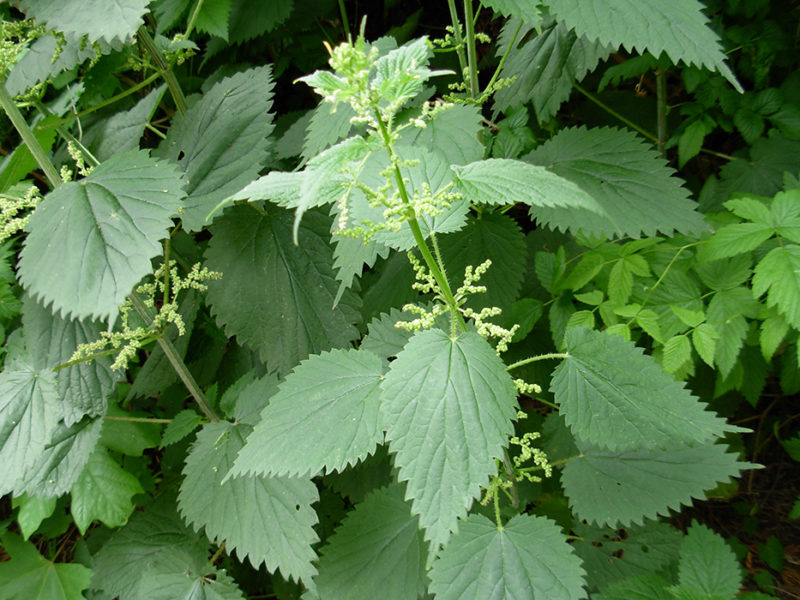

Regardless of being marvelous in nettle tea and many recipes, stinging nettle (Urtica dioica) could be a ache to have wherever in your homestead.
In contrast to the opposite crops we’ve checked out, the rash seems virtually right away and may embrace raised lumps that appear like hives.
Some individuals may even have an allergic response and this ought to be handled as a medical emergency.
For many of us, one of the best factor to do is let the chemical substances inflicting the ache to dry, so go away the world alone for round 10 minutes. Then, wash with cleaning soap and water, however keep away from onerous scrubbing as you might push the toxins deeper or unfold them to different elements of the physique.
You’ll typically discover patches of stinging nettle in damp and moist areas, particularly close to streams, or in wooded areas with a thick cover.
The stems and leaves are coated in little hairs. These are hole and when the plant comes into contact together with your pores and skin, chemical substances move by way of these hairs, inflicting immediate stinging and a rash.
The crops are as much as 5 toes tall with reverse leaves. Leaves are pointed with closely toothed margins.
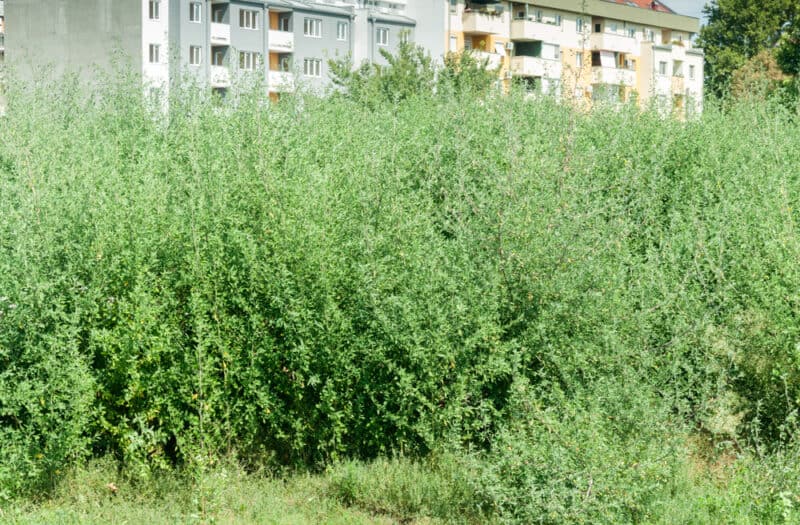

Ragweeds, that are crops within the Ambrosia genus, comprise lots of pollen and are sometimes blamed for hay fever signs. They will additionally trigger pores and skin rashes in people who find themselves allergic to the pollen. Publicity occurs when the pollen within the air is inhaled, or the individual touched the plant and received pollen on their pores and skin.
The pollen is on the high of the plant in flowers that develop like spikes or streamers. The leaves are mid-green in coloration. The leaves virtually look fern-like and have wonderful hairs.
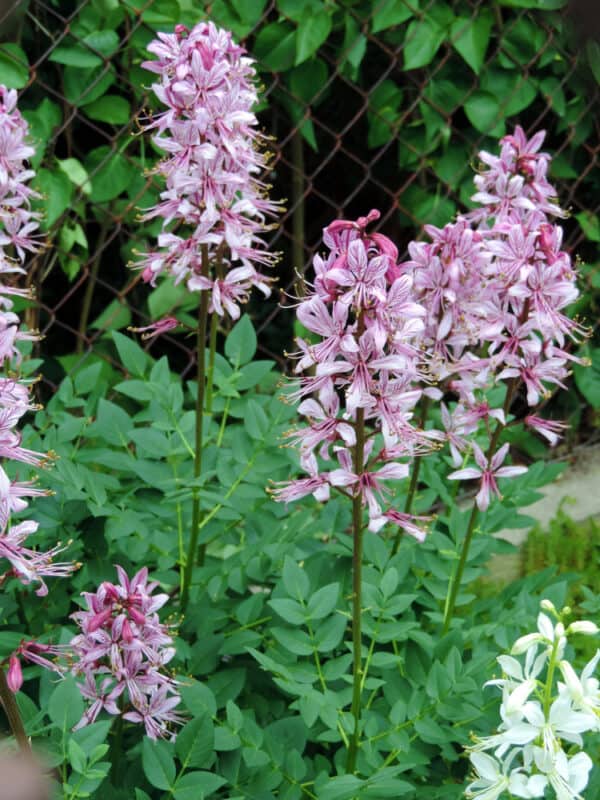

Fraxinella (Dictamus albus) is a herb that many individuals develop, however the sap might trigger unhealthy pores and skin irritation in some individuals when the sap touches their pores and skin and is uncovered to daylight.
Many individuals love the flowers and the citrus scent, however merely having the plant rub on the pores and skin could cause a nasty rash.
The plant itself grows about 40 inches tall with spikes of purple or white flowers. The leaves look much like these you discover on an ash tree.
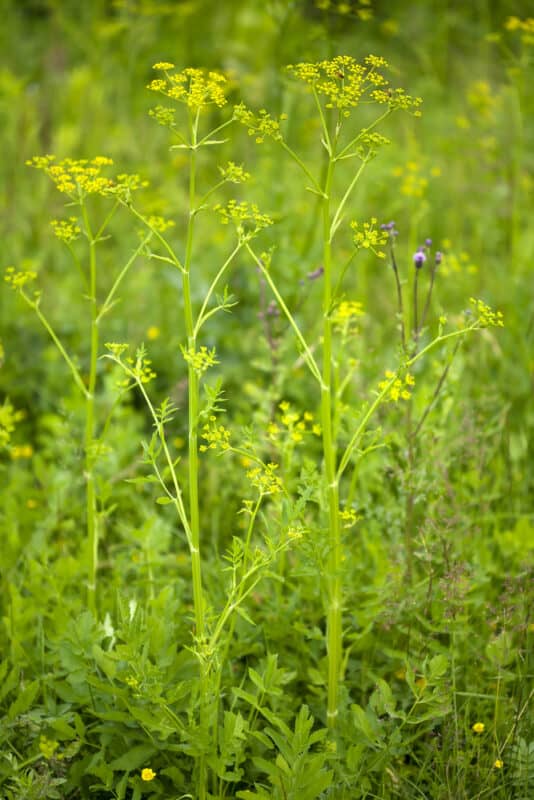

This tall plant (Pastinaca sativa) with small yellow flowers comprises a sap that causes a painful rash when it has contacted the pores and skin and been uncovered to daylight. It takes about 24 hours earlier than you discover the signs, however then they arrive on fairly swiftly.
The localized burning will be fairly intense after which it varieties right into a rash which frequently blisters. Sensitivity to the solar for the affected pores and skin can final for as much as two years.
With edible roots, the wild parsnip is a sought-after plant for some individuals, however the remainder of the plant is poisonous. Positively finest left to the skilled foragers. The remainder of us ought to keep away from it in any respect prices.
Wild parsnip can develop six toes tall when in flower, which occurs in its second 12 months. It appears much like Queen Anne’s Lace and has a hole stem. Leaves are ovate and turn into smaller close to the highest of the stem.
The listing of crops that may trigger pores and skin irritation simply from touching them is lengthy as a result of we’re all completely different and delicate to various things. The listing above contains the commonest crops that trigger pores and skin irritation in nearly everybody who touches them.
Whilst you ought to intention to take away these irritants out of your property, listed here are some methods to guard your self when you’re out and about or eradicating them:
Yes No
×
Your reply shall be used to enhance our content material. The extra suggestions you give us, the higher our pages will be.
Facebook Pinterest
Some crops trigger minor irritation and a few trigger extreme blistering. Studying which crops are a possible supply of ache in your homestead is a vital ability to grasp.
When you turn into aware of these crops, you possibly can simply spot and eliminate them earlier than they develop massive sufficient to trigger you and your loved ones any points.
1. Poison Ivy


This could be the commonest irritating plant and essentially the most recognizable. Poison ivy grows throughout the US and odds are you’ve come throughout it very often when you spend time within the nice open air. There are three completely different species you may see within the US: Toxicodendron radicans, T. rydbergii, and T. orientale.
Poison ivy comprises a chemical referred to as urushiol, which is in your complete plant together with the leaves, roots, and flowers.
One of many annoying issues about poison ivy is that pores and skin irritation can seem days or perhaps a week after you might be uncovered. This leaves you confused and you might not hyperlink the problem again to if you have been exterior and encountered the plant.
If you happen to are available contact with the plant elements, and even somebody or one thing that has, you’re going to get an aggravating itch, redness and swelling, and generally blisters.
Topical or corticosteroid lotions might assist, or a physician might prescribe medicine in case your response is extreme.
Figuring out Poison Ivy:
Poison ivy grows in backyards within the suburbs, on homesteads, on the aspect of the street, and nearly wherever the land has been disturbed. It grows in a climbing behavior or trails alongside the bottom.
Poison ivy loses its leaves in fall, however the plant stays an irritant with out leaves, which develop again out within the spring.
They’ve compound leaves in clusters of three. Keep in mind the adage: leaves of three, let or not it’s. The center leaf stalk is the longest.
2. Poison Sumac


That is one other widespread plant throughout the US and in addition comprises urushiol. Normally present in environments round water like ponds, wetlands, and streams. You’ll find it wherever, however particularly in heavy clay soil.
It causes pores and skin irritation by way of contact, although as with all urushiol-containing crops, you could break the leaves, stems, or roots to be uncovered. Brushing up in opposition to the plant received’t do it.
In some individuals, poison sumac will be extra poisonous than poison ivy.
Figuring out Poison Sumac:
Poison sumac is typically referred to as thunderwood (Toxicodendron vernix) grows like a small tree or shrub.
It’s recognizable by the purple stem that comes off the trunk of the plant and has as much as 13 clean inexperienced leaves. The flowers are gentle yellow with a inexperienced tinge, and the berries are uninteresting grey.
3. Poison Oak


Rounding off our three crops containing urushiol, you could find poison oak (Toxicodendron diversilobum) in dry areas and forest places.
Additionally, remember that some individuals aren’t affected by urushiol they usually received’t notice they’ve been within the stuff till they contact somebody who’s affected. Then, that individual will escape in a rash as a result of the urushiol can journey on pores and skin, clothes, or instruments.
That’s why you really want to establish and remove the stuff. Don’t burn it, although! Burning urushiol-containing crops releases poisons into the air that may injury your lungs.
Figuring out Poison Oak:
Poison oak has bushy, yellow flowers and berries coated in a skinny fuzz. It may possibly develop as a big woody vine or a woody shrub. It’s a deciduous plant, however remember. Even the twigs and stems with no leaves will trigger extreme pores and skin irritation.
The leaves are in a cluster of three and are darkish inexperienced. They appear a bit like English oak, although they aren’t associated.
It’s onerous to establish all theToxicodendron crops on this listing in the course of the winter as a result of the leaves aren’t current. That’s why it’s best to do your finest to look at them and keep in mind the place the patches are positioned in your property when the leaves are current.
4. Wooden Nettle


If you happen to wander by way of moist woodland areas, you might be more likely to come throughout wooden nettle (Laportea canadensis). It’s widespread in shaded and moist areas of homesteads. It doesn’t develop within the western a part of the US.
Many individuals eat wooden nettle by sautéing them. Simply you’ll want to put on gloves when gathering the crops.
Out of all of the stinging crops, I discover wooden nettle the simplest to cope with. If you happen to wash with cleaning soap and water, you possibly can diminish the results. Keep in mind although, these crops have an effect on individuals in numerous methods so one of the best factor is to keep away from all of them when you can.
Figuring out Wooden Nettle:
Wooden nettle tends to develop in medium to massive patches, making it fairly simple to identify. At round 4 toes tall, stems are coated in stiff hairs that can sting you if you contact or simply rub in opposition to them.
The leaves are serrated and are darkish inexperienced or generally gentle inexperienced. The younger leaves have lots of hairs and in the summertime you will notice strands of white flowers.
5. Leadwort


Ceratostigma plumbaginoides is a standard plant many individuals use of their gardens as a floor cowl. It appears fairly good, however don’t contact it.
Often known as plumbago, leadwort is widespread within the southern United States.
Use gloves when dealing with this plant as a result of pores and skin irritation is widespread together with redness and blistering.
Figuring out Leadwort:
The plant grows as much as 10 inches tall and is deciduous or semi-evergreen. The inexperienced leaves flip purple in fall, with gentian flowers blooming in spring and summer season.
6. Big Hogweed


Have you ever ever checked out an overgrown space and thought you’d simply get a begin at eradicating the weeds? There’s the chance large hogweed (Heracleum mantegazzianum) is in among the many crops there. It’s widespread and thought of a noxious weed that’s invasive in North America.
There’s a sap inside this plant that causes irritation to your pores and skin and severe harm to the eyes that may trigger blindness. Critically: you could preserve the sap away out of your pores and skin and eyes.
Blistering and scarring is widespread, with the scar truly trying like burned pores and skin. You might also find yourself delicate to daylight.
Big hogweed is what is named a phototoxic plant. It wants ultraviolet gentle to burn your pores and skin. To be extra exact, it stops your pores and skin from having the ability to shield itself from the solar. If you happen to mistakenly contact this plant, keep out of daylight till you possibly can wash with cleaning soap and water. Even higher, keep out of the solar for 48 hours after washing.
Figuring out Big Hogweed:
Big hogweed grows tall. It’s recognized to achieve 14 toes in peak. The stems are onerous and hole, with white hairs. The leaves could be a large 5 toes throughout. It has massive clusters of white flowers.
7. Stinging Nettle


Regardless of being marvelous in nettle tea and many recipes, stinging nettle (Urtica dioica) could be a ache to have wherever in your homestead.
In contrast to the opposite crops we’ve checked out, the rash seems virtually right away and may embrace raised lumps that appear like hives.
Some individuals may even have an allergic response and this ought to be handled as a medical emergency.
For many of us, one of the best factor to do is let the chemical substances inflicting the ache to dry, so go away the world alone for round 10 minutes. Then, wash with cleaning soap and water, however keep away from onerous scrubbing as you might push the toxins deeper or unfold them to different elements of the physique.
Figuring out Stinging Nettle:
You’ll typically discover patches of stinging nettle in damp and moist areas, particularly close to streams, or in wooded areas with a thick cover.
The stems and leaves are coated in little hairs. These are hole and when the plant comes into contact together with your pores and skin, chemical substances move by way of these hairs, inflicting immediate stinging and a rash.
The crops are as much as 5 toes tall with reverse leaves. Leaves are pointed with closely toothed margins.
8. Ragweed


Ragweeds, that are crops within the Ambrosia genus, comprise lots of pollen and are sometimes blamed for hay fever signs. They will additionally trigger pores and skin rashes in people who find themselves allergic to the pollen. Publicity occurs when the pollen within the air is inhaled, or the individual touched the plant and received pollen on their pores and skin.
Figuring out Ragweed:
The pollen is on the high of the plant in flowers that develop like spikes or streamers. The leaves are mid-green in coloration. The leaves virtually look fern-like and have wonderful hairs.
9. Fuel Plant


Fraxinella (Dictamus albus) is a herb that many individuals develop, however the sap might trigger unhealthy pores and skin irritation in some individuals when the sap touches their pores and skin and is uncovered to daylight.
Many individuals love the flowers and the citrus scent, however merely having the plant rub on the pores and skin could cause a nasty rash.
Figuring out Fuel Plant:
The plant itself grows about 40 inches tall with spikes of purple or white flowers. The leaves look much like these you discover on an ash tree.
10. Wild Parsnip


This tall plant (Pastinaca sativa) with small yellow flowers comprises a sap that causes a painful rash when it has contacted the pores and skin and been uncovered to daylight. It takes about 24 hours earlier than you discover the signs, however then they arrive on fairly swiftly.
The localized burning will be fairly intense after which it varieties right into a rash which frequently blisters. Sensitivity to the solar for the affected pores and skin can final for as much as two years.
With edible roots, the wild parsnip is a sought-after plant for some individuals, however the remainder of the plant is poisonous. Positively finest left to the skilled foragers. The remainder of us ought to keep away from it in any respect prices.
Determine Wild Parsnip:
Wild parsnip can develop six toes tall when in flower, which occurs in its second 12 months. It appears much like Queen Anne’s Lace and has a hole stem. Leaves are ovate and turn into smaller close to the highest of the stem.
The best way to Defend Your Pores and skin From Irritating Crops
The listing of crops that may trigger pores and skin irritation simply from touching them is lengthy as a result of we’re all completely different and delicate to various things. The listing above contains the commonest crops that trigger pores and skin irritation in nearly everybody who touches them.
Whilst you ought to intention to take away these irritants out of your property, listed here are some methods to guard your self when you’re out and about or eradicating them:
- Put on garments that shield your legs and arms. Most of us have backyard gloves to guard our fingers, however we regularly neglect about our forearms and legs.
- Put on security glasses when eradicating widespread crops that trigger pores and skin irritation. Lots of them comprise sap which might trigger irritation and even blindness if it will get in your eyes. Getting the hairs of crops in your eye may also trigger extreme irritation and ache.
- Wash your gardening garments. Most of the compounds in these crops will sit on the floor of your garments, solely to have you ever or another person contact them and get it on their pores and skin. Think about washing your garments immediately after working close to these crops or when eradicating them, even when you keep on gardening in a contemporary set of garments.
- Have another person do the job of eradicating these crops if you’re notably affected by them.
Was this text useful?
Yes No
×
We admire your useful suggestions!
Your reply shall be used to enhance our content material. The extra suggestions you give us, the higher our pages will be.
Observe us on social media:
Facebook Pinterest
